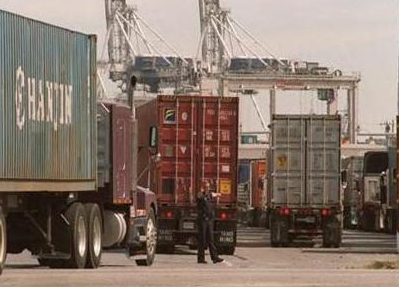Supply Chain Challenges Loom in 2014
 As fleets, trucking companies, shippers, packers and manufacturers prepare budgets and operational plans for the year ahead, supply chain challenges loom in 2014.
As fleets, trucking companies, shippers, packers and manufacturers prepare budgets and operational plans for the year ahead, supply chain challenges loom in 2014.
2013 saw its fair share of issues. Shippers were forced to adapt to a slowly recovering economy and increased regulatory mandates, compounded by the continued pressure to cut costs and maintain service levels – all while effectively planning for the future.
According to Transplace, a leading provider of transportation management services and logistics technology, the following are key issues that many supply chain professionals are anticipating as the greatest logistics challenges heading into 2014.
 Increased Regulatory Mandates: The impact of the sweeping regulatory mandates that will come into effect over the next few years will continue to greatly influence the transportation industry. The Federal Motor Carrier Safety Administration (FMCSA) Compliance, Safety, Accountability (CSA) standards and new hours of service (HOS) rules will compound preexisting capacity challenges due to the reduction in fleet productivity. Shippers will be forced to change their logistics strategies to avoid cost increases and avoid disruptions in the transportation of goods.
Increased Regulatory Mandates: The impact of the sweeping regulatory mandates that will come into effect over the next few years will continue to greatly influence the transportation industry. The Federal Motor Carrier Safety Administration (FMCSA) Compliance, Safety, Accountability (CSA) standards and new hours of service (HOS) rules will compound preexisting capacity challenges due to the reduction in fleet productivity. Shippers will be forced to change their logistics strategies to avoid cost increases and avoid disruptions in the transportation of goods.
Tightening of Capacity: While the economy has been slow to rebound, there have been several indicators of modest recovery as retail sales grew to $183.1 billion in October 2013 – hitting a new all-time high¹ – manufacturing is up year-over-year and auto sales reached its highest levels since February 2007. If this trend continues, companies could see a tightening of capacity during produce season in late April and early May, extending into the summer months. Capacity constraints will be further exacerbated due to productivity lost because of regulatory mandates such as CSA and HOS.
Increasing Customer Demands: More than ever, companies are looking at the supply chain as a significant opportunity for cost savings. As a result, many forward-thinking retailers are putting processes in place to create more efficient, cost-effective supply chains. These retailers are implementing supplier compliance initiatives with tight delivery windows – including penalties for not delivering shipments on-time – adding increased complexity to the supply chain for consumer packaged goods (CPG) companies. The challenge of adapting to the changing customer demands is compounded by the push for CPG companies to become lean and cut costs within their own operations.
But all is not dark and gloomy. Transplace also suggest the following strategies to capitalize on supply chain opportunities.
- Consolidate and Mode Shifts: Shippers should examine their transportation network and identify opportunities to consolidate shipments and expand their mode utilization. Not only can this be an effective strategy to reduce transportation costs, but continued conversion of truck freight to intermodal will help shippers be better positioned when truckload capacity becomes tight.
- Become the Shipper of Choice: The relationship between a shipper and its carrier network can be critical to achieving and maintaining quality, efficient supply chain operations. Shippers should make it a priority to become the top choice for carriers by evaluating their transportation management processes and measure what value they bring to the carrier community. Companies should implement carrier-friendly policies, good fuel surcharge programs and consistent freight volumes, and be collaborative with their carriers and encourage innovation.
- Collaborate on Shipping Opportunities: With many of the traditional methods of establishing strong, efficient processes exhausted, shippers are looking for alternative methods to drive better results. As a result, companies have been more willing to engage in collaborative shipping – with programs such as Transplace’s TransMATCH multi-company co-shipping program – as a way to deliver cost savings, improve customer service and make a sustainability impact.
- Work with a Logistics Provider: In the face of rising costs and increased customer demands, many shippers are partnering with a third party logistics (3PL) provider to optimize their transportation management. An effective 3PL partner relationship can offer shippers a wider range of transportation network options, as well as strong expertise regarding transport lanes and modes, knowledge about federal and state regulations and a range of technology-based solutions tailored specifically to their needs.
About Transplace
Transplace is a non-asset, North America-based third party logistics (3PL) provider offering manufacturers, retailers, chemical and consumer packaged goods companies the optimal blend of logistics technology and transportation management services. From complete logistics management outsourcing to SaaS transportation management system (TMS) and supply chain network planning and design to high-quality brokerage services, Transplace is focused on delivering both rapid return on investment and consistent value to customers. More information at: www.transplace.com.
Category: Featured, General Update, Management










